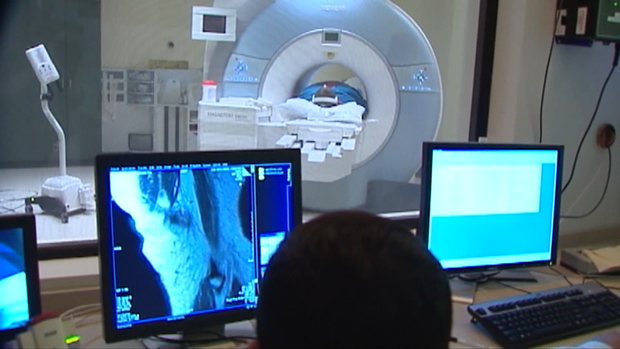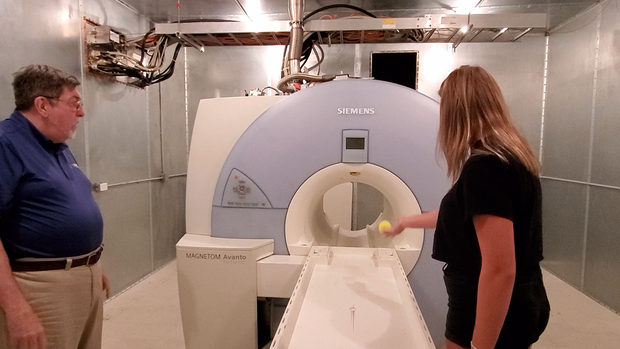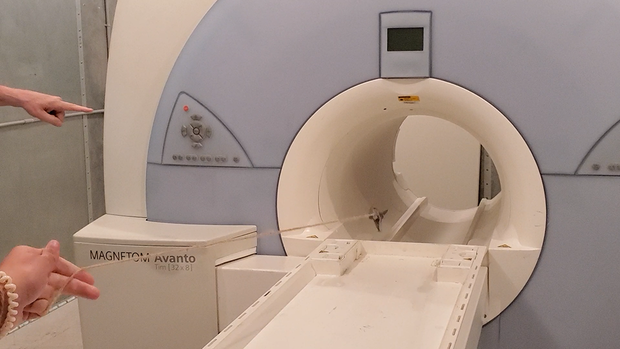Hey Ray! How MRI's Work
PITTSBURGH (KDKA) -- Have you ever had to get an MRI? That is the loud machine with a very powerful magnet that can make images of the inside of your body.
If you have had an MRI, you may have wondered how it sees inside you, and what happens if metal gets near it.
Since my brother works for RSTI, a company in Solon, OH that trains engineers and medical professionals how to work on medical imaging equipment, he put us in touch with the MRI instructor, Lance King.
Ray: What Does MRI stand for?
Lance King: It stands for Magnetic Resonance Imaging.
Elizabeth: How does an MRI work?
Lance King: Well it's actually pretty amazing. Most medical technology uses X rays. That's invasive, and too many X rays are dangerous. MRI does not use X rays. It uses radio frequencies in combination with the magnetism, so what happens when you go inside the magnet, your hydrogen protons, which is basically water, line up with a magnetic field. Then, you hit those protons with a very powerful RF, radio frequency, signal. That signal flips those protons to an energized state. When you turn off that signal, those energized protons start to relax and realign with the magnet. They give off a very tiny radio frequency signal, which we pick up with a coil, which is basically a form of an antenna. Then we take that through a series of, you know, computers and things, and we turn it into an image.
Ray: Is getting an MRI dangerous?
Lance King: No. You feel absolutely nothing. The biggest complaint about MRIs is the fact that people are a bit claustrophobic, and they are very loud inside, but there's nothing moving. There's nothing harmful. They're very, very safe, and you could have an MRI, literally every day, the rest of your life, and it would never hurt you. I can tell you that I've been personally scanned over 200 times.
Elizabeth: What are other cool things we should know about MRIs?
Lance King: Basically, an MRI is a superconducting electro magnet, and by "superconducting" I mean that it is actually filled with liquid helium, and that liquid helium exists at four degrees Kelvin, which is four degrees above absolute zero. Absolute Zero is the point where all molecular motion, and anything stops. MRIs are basically just a big electromagnet, but instead of using copper wire around an iron core, it uses niobium titanium wire that's in a bath of liquid helium that helium is at four degrees Kelvin. The niobium titanium is superconducting, which means when it's that cold, it has zero resistance, and the basic laws of electricity kind of go out the window at this point. Once you introduce a current into that coil of wire, it goes on forever and ever and ever without stopping.
Ray: What happens if you have metal in the MRI room?
Lance King: Well that's a great question. Magnetic metals and MRIs do not mix. Basically, what will happen is that if you take something metallic in the room, the magnet is going to rip it out of your hand, and it's going to become a bullet towards anybody who might be inside it at the time. It's very dangerous from that perspective, otherwise MRIs are very safe.
Elizabeth: Can you show us?
Lance does show us some cool experiments with metal in the MRI, which has a magnetic field that is 30,000 times stronger than Earth's magnetic field. The first experiment shows what a tennis ball filled with steel wool will do when in the presence of the MRI's magnet.
The next experiment uses scissors attached to twine, and they levitate as the magnet tries to pull them through. Lance says something like that could be deadly to someone inside.
The final demonstration shows how something small, like paperclips, still could hurt someone.
These experiments are very cool, in my opinion, and are best viewed in the attached video.









